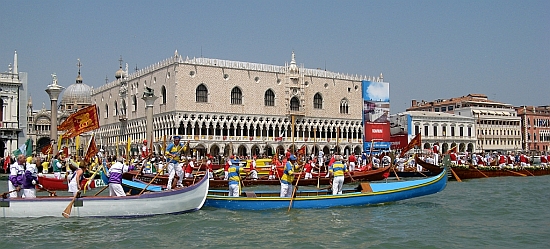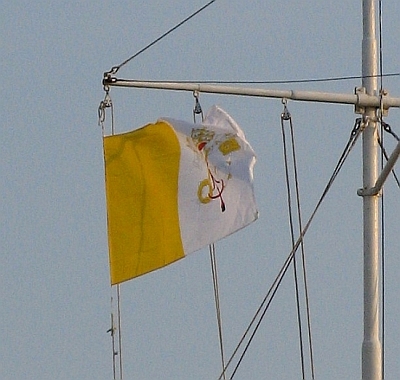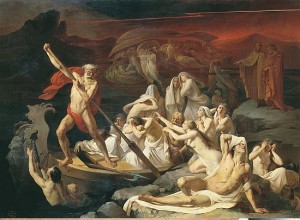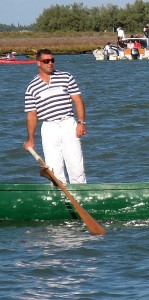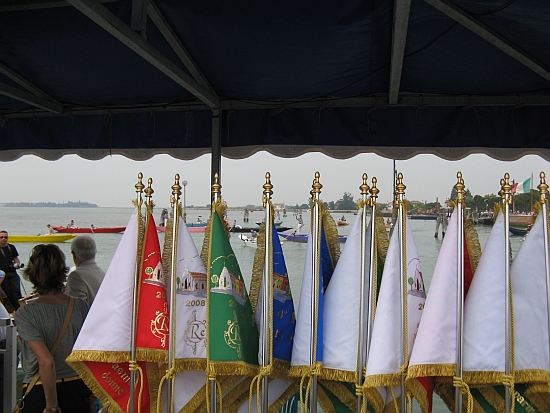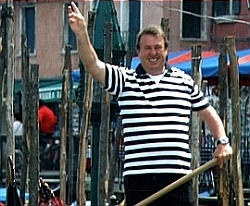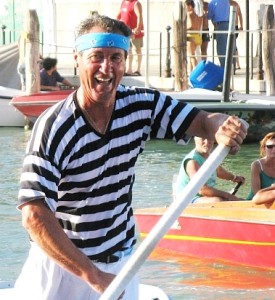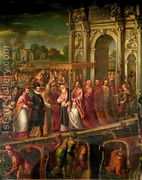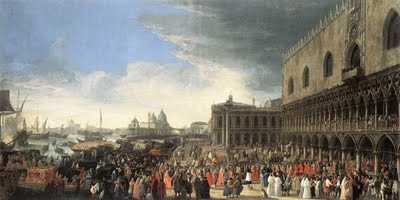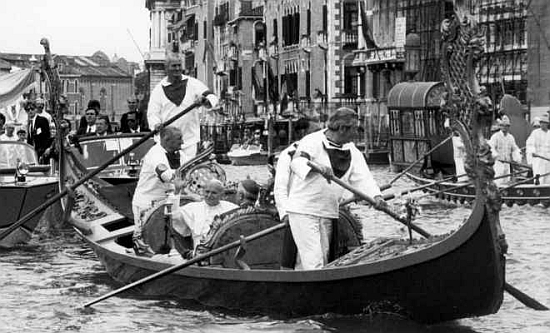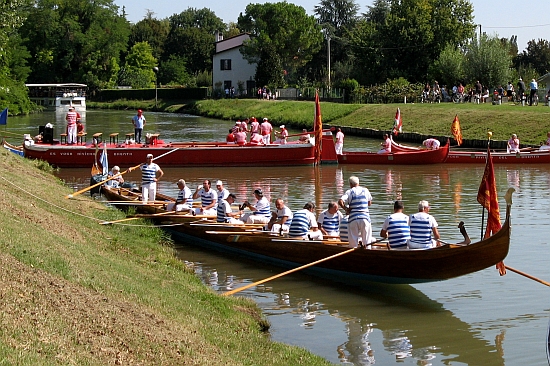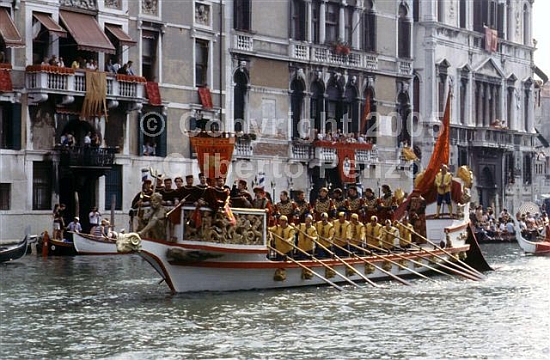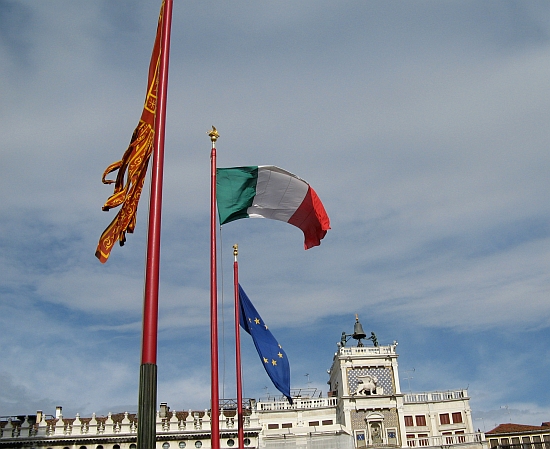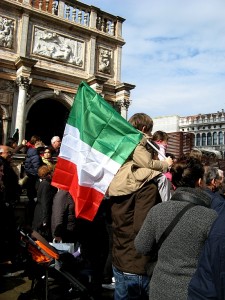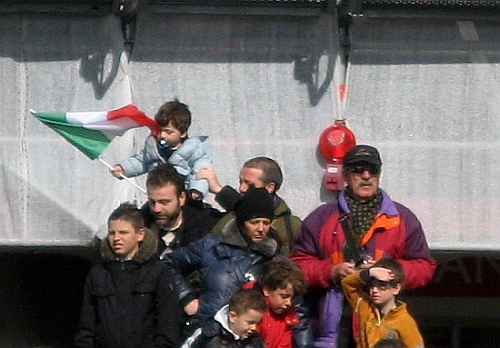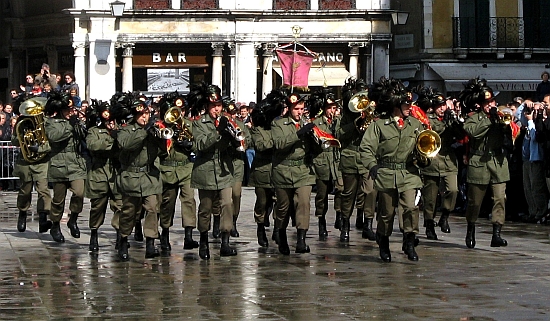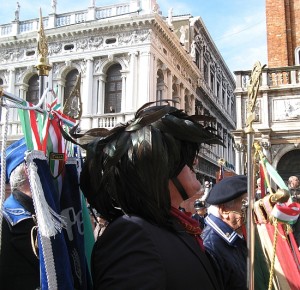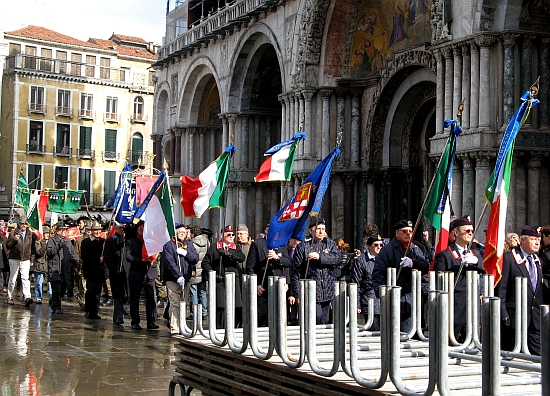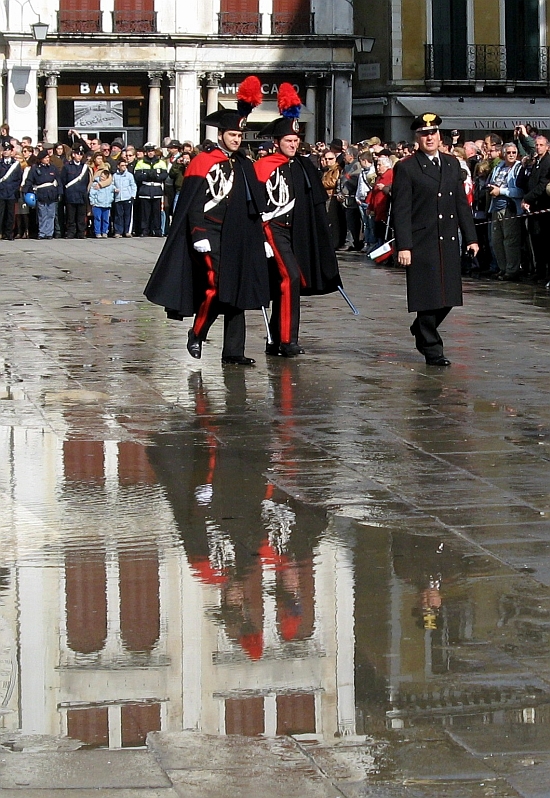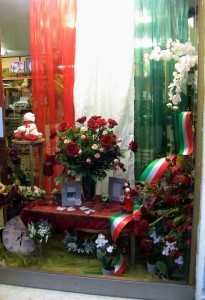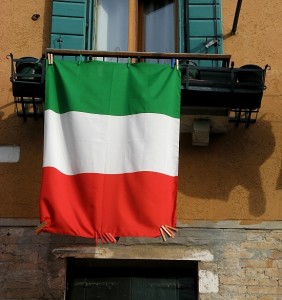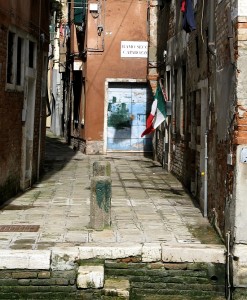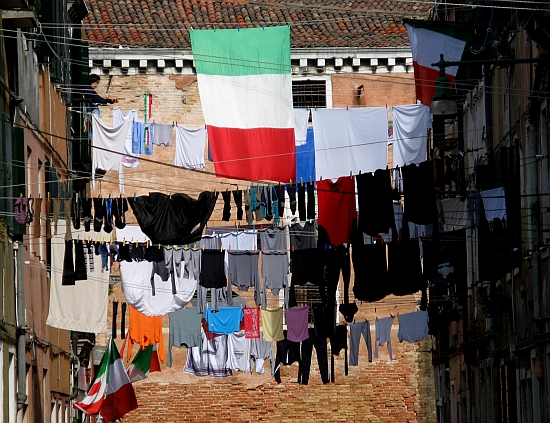- The one and a half days that the Pope spent in and around Venice have left a pleasant glow, it appears, in the hearts of virtually everyone, even the gondoliers. There was a special glow radiating from the Patriarch of Venice, too, which shone, in my opinion, from the eternal flame in his innermost being where his desire to become Pope burns night and day.
But there was no sturm, neither was there any drang. The four gondoliers who rowed His Holiness across the Grand Canal all said they got really emotional; one even said he had goosebumps when it struck him he was rowing the Pope himself.
My goosebumps were also abundant but they were caused less by emotion (sorry) than by the relentless cold wind which was blowing from the east on Saturday afternoon.
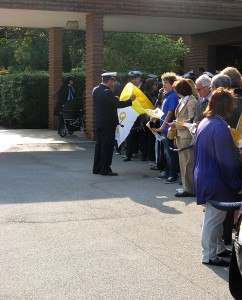
Lino and I, along with about 50 other people, waited outdoors at the Naval College to greet the Pope as he passed from his helicopter to the motor launch. Wind is fine, but we ended up standing for three solid hours out there, drastically underdressed. So I win two extra points for having chills even before the Pope appeared.
A few of my other memories are similarly physical. Speaking of standing for three hours (his helicopter landed at the Naval College 45 minutes late) the wind wasn’t the worst part. It was only the suspense of waiting that smothered the desperate Mayday-Maydays from my feet.
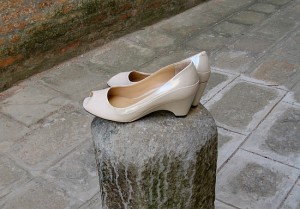
I can tell you that if the Pope had looked at my feet, he’d have seen two attractive beige pumps with a moderately low heel. If he’d looked at my face, he would have realized that this footwear had been designed by Torquemada, the “hammer of the heretics.” Lino helped me limp home.
The Pope himself, I can confirm from very close range, is very small, very thin, and very old. All those vestments and the magical amplifying effects of television obscure these facts.
I was also musing — as I stood there, resisting hypothermia — on how relatively simple it appears to be Pope, in the sense that his every moment is managed by phalanxes of people of every description. The area was pullulating with important men who couldn’t keep still. They arrived, they departed, singly or in small groups, while we all tried to interpret what significance these movements might have. Naval people, from the Commandant down to the sailor with the bosun’s whistle, mixed with lots of men in dark suits and dark glasses who looked like narcs.
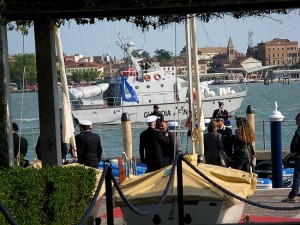
As for maintaining the safety of the area, there were firemen, divers in wetsuits checking the underwater area where his launch was waiting; State Police, Carabinieri, Guardia di Finanza, Civil Protection, Capitanerie di Porto. Any entity whose agents are entitled to wear a uniform, or a badge, or carry some communication device, had somebody there.
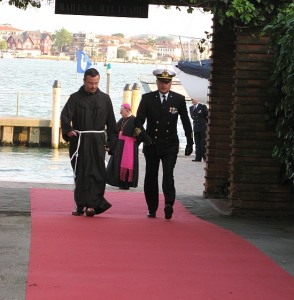
When the Pope arrived, all these armed people were supplemented by priests and deacons and bishops, assigned to carry things. He doesn’t travel with one large suitcase, he divides his necessities among four or five carry-on bags. And other variously shaped containers. The Pope himself was almost an afterthought to all this entourage. (Suddenly I”m wondering whether in the throes of all these aides, assistants, keepers, hewers of wood and drawers of water, whether His Holiness could just walk away. It might be days before anybody realized he was gone.)
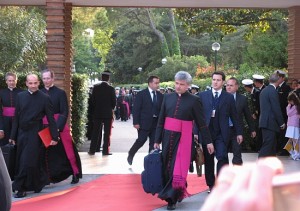
Of course all this is necessary. It was already known that the Secret Service had spent days checking every single palace lining the Grand Canal, ringing the doorbells of everybody who had an apartment with a Canal-facing window and asking for names, dates, and serial numbers (so to speak).

Of course this is normal procedure, it’s just that when you think of having to accomplish that little task here, you suddenly realize how many palaces and windows there are along the wettest main street in the world. But it had to be done. No agent wants to be the one who didn’t manage to speak to little old Mrs. Tagliapietra on the fourth floor and find out too late that she let in somebody Sunday morning who claimed to want to read the gas meter.
Sunday morning was the big mass on the mainland for some 300,000 of the faithful. Then he got into his launch and headed back to Venice, and finally the big boat procession in the Grand Canal was on.
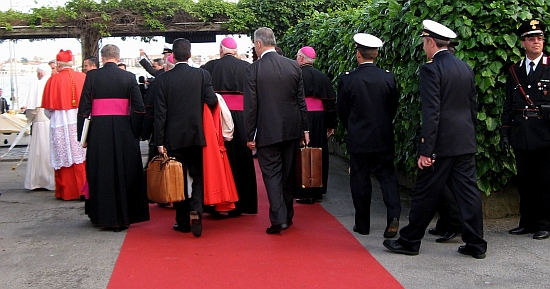
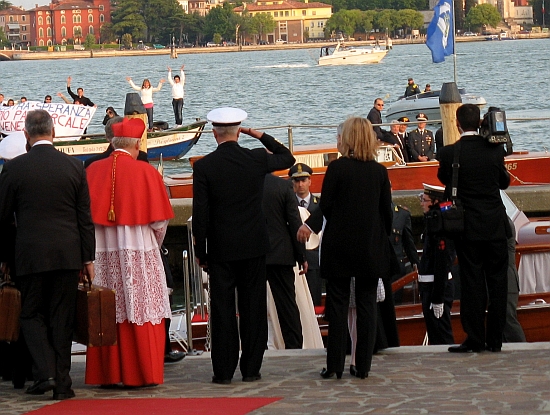
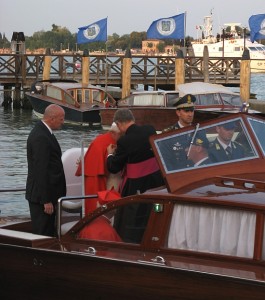
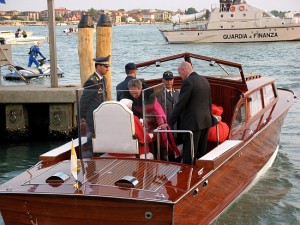
We were long since at our assigned place. We tied up the boat at about 11:45. Then we waited. (“Papal Visit” translates into the Real-Life Dialect as “Bring a book and food and a jacket and make sure they leave the light on for you.”)
Finally, at about 1:30, came the long-awaited moment. The sun was shining, the breeze had gone down somewhat, and there were more boats than I’ve seen in a corteo in quite some time. Big, important, glamorous boats. I would never presume to compare the emotion generated by the Pontifex Maximus to that generated by masses of Venetian boats, but I can tell you one thing:
It’s the only procession I’ve participated in that called to mind the emotions experienced by Venetians in centuries past at similar visitations. Because while the procession for the Festa de la Sensa is nice, and the procession for the Regata Storica is just one postcard after another, these are merely re-evocations of a remote event. This was an event in itself; it wasn’t replicating anything. I’m not sure I ever thought this was possible anymore.
My feet have their own thoughts, however, and they are not happy ones. And the shoes have been sent to the corner for a very, very long Time Out.

